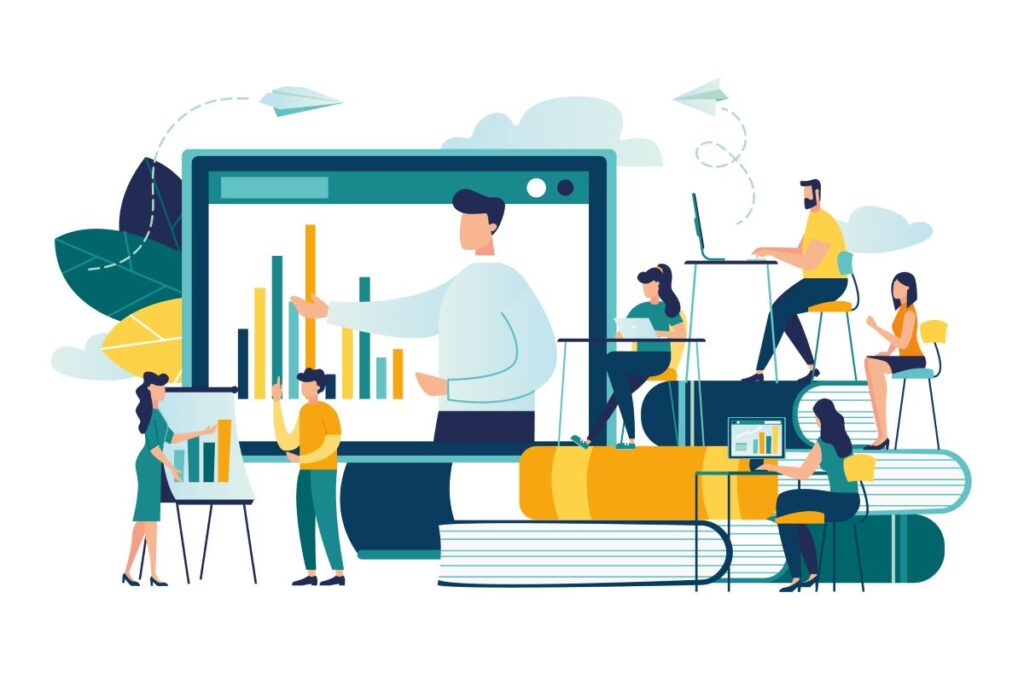When you think about infographics, you’re probably thinking about social media, marketing, or resume building. While they can be used for all of these things, they can also be used as a tool for the classroom and educators. When used with a purpose, they can help students break down or make sense of complex ideas.
Here’s a look at how you can start using infographics in your classroom in a way that’s effective and doesn’t require any design experience.
A New Way to Help Students Understand Content
We live in a visual world where most students process information faster when they are shown rather than just told. Infographics work because they blend images, text, and layout to deliver key points quickly at a glance. They are especially helpful for students who struggle with reading long texts or who learn better visually.
Here’s what infographics can do in a classroom:
- Help students see relationships between ideas, like cause and effect, or before and after
- Support students who need scaffolds to organize their thinking
- Make abstract concepts feel more concrete
- Reinforce memory by pairing facts with visuals
- Offer a way for students to show what they know in a creative, low-pressure format
Infographics aren’t meant to replace instruction; they’re meant to support it, either as an introduction, summary, or extension of your teaching.
How to Use Infographics in Your Lessons
You don’t need to change the way you teach to start using infographics. They can fit right into what you’re already doing. Here’s how to make them work in your classroom.
To Spark Curiosity
Infographics are a great tool to use at the beginning of a lesson or unit. This visual can get students excited about what they are about to learn by asking questions, making predictions, or activating prior knowledge. For example, a health teacher might begin a unit with an infographic about how much sugar is in soda or energy drinks to grab students’ attention, while an English teacher might use a character map infographic to explore character traits or relationships before reading a novel.
To Keep Ideas Visual
Instead of writing everything out by hand on chart paper, try using a digital tool to create a cleaner, more polished version. Add simple visuals or icons alongside short bits of text to help make the content easier to understand at a glance. These kinds of charts are especially helpful for students who need visual cues, like multilingual learners or those with IEPs. Keep them posted on the wall or saved digitally, where students can easily refer back to them.
To Wrap Up a Unit
Infographics are a great way for students to visually see how everything they’ve learned fits together. For example, a history teacher might show a timeline of key events, important historical figures, and even outcomes. This can help students make meaning out of what they’ve just learned throughout the unit.
To Turn Understanding into a Graphic
Allow students to take the reins and give them a chance to show what they’ve learned by creating their own infographic. They’ll have to decide what’s most important, how to organize it, and how to make it clear for others. It’s especially great for students who prefer visual or independent work, and it gives you a fresh way to see what they’ve learned.
Where to Find Infographics
There are plenty of pre-made infographics that are ready to use. Try websites like:
- Newsela or CommonLit for literacy-based infographics
- National Geographic Kids for science and geography visuals
- Statista or Pew Research for real-world data
- The Noun Project for icons to build your own visuals
- Canva for Education for editable classroom templates
- Venngage for polished, easy-to-edit templates made for schools and students
- CDC Healthy Schools for infographics on nutrition, sleep, physical activity, and overall wellness
- American Heart Association for clear visuals on health topics like stress, movement, and healthy habits
Make sure anything you use is age-appropriate and ties into your learning goals. You can even have students evaluate infographics as part of a media literacy lesson.
How to Create Your Own Infographic
You don’t have to be a graphic designer to create an infographic, and you don’t have to pay either. Platforms like Canva offer free, teacher-friendly templates that are fun and easy to use. Here are a few tips to keep in mind when you are creating one.
- Focus on clarity over the overall decoration
- Stick to one topic per infographic
- Choose simple colors that won’t be distracting
- Add visuals to reinforce the concept, not distract from it
- Less is more, so try and keep your words to a minimum
Don’t feel the need to fill up the entire page. Students should be able to quickly scan the page to grasp the meaning.
Teaching Students to Make Their Own
Here are a few tips to share with students who are making their own infographics.
Choose One Topic
Have students pick a subject they understand well. This helps them focus on the content they know well instead of having to take time to research a new topic.
Organize the Information
Have students start with a short outline or graphic organizer. Ask them, “What are the three most important things someone should know?” This will help them organize their thoughts before they create their graphics.
Sketch a Layout
Encourage students to plan before they start dragging and dropping. Where will the title go? What kind of images might help? What is the best order to put the information in? This outline can help students make sense of the information.
Create the Infographic
Provide access to tools like Canva and encourage them to keep it simple and clean. Remind students that clarity is more important than decoration.
Share and Reflect
Build in time for students to present their work or do a gallery walk. You can also ask them to reflect on their design choices and how they communicated the information.
Infographics work best when they help students make sense of what they’re learning. Whether you’re using a pre-made visual to introduce a topic or guiding students through designing one of their own, the goal is to make information more approachable and memorable.
It doesn’t have to be complicated. With a few simple tools and a clear purpose, infographics can become one more way you reach students where they are and give them new ways to learn, remember, and explain what they know.




